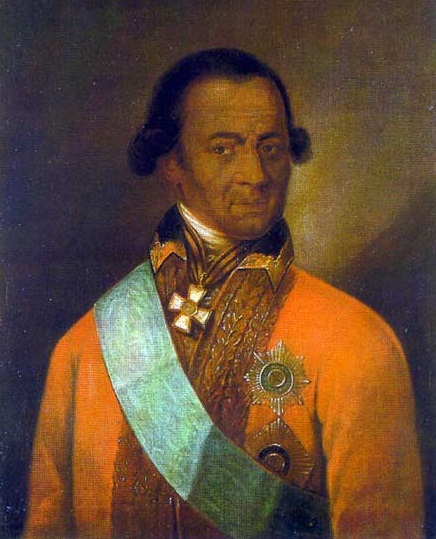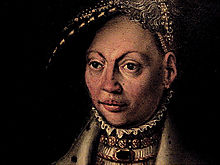During Medieval times, the concept of racism based on skin colour was unknown. The Romans had considered Germans, Gauls (French) and Britons as barbaric and primitive.
Slavery in Ancient Rome | UNRV.com
When Northern Europe was undergoing its "dark ages", the cities were filthy and disease ridden. The people were extremely poor and superstitious. At the time, there were universities and fine cities in China, India, the Arab world and Africa.
Map of Mombasa, Kenya (15th Century AD)
At that time, there were African saints, ambassadors, business people, and they even entered into the ranks of the nobility. These were known as "Moors"....a Latin term for "dark skinned person"
St Maurice of the Theban Legion, ca. 1245
Saint Gregory the Moor 1683 AD
Saint Benedict the Moor
Don Miguel De Castro, Ambassador from Kongo Kingdom to the Netherlands
Abram Petrovich Gannibal, Russian General and nobleman (1696-1781)
Dorothea of Denmark (1 August 1504 – 11 April 1547), was a duchess of Prussia by marriage to Duke Albert of Prussia
Alessandro de' Medici (22 June 1510 – 6 January 1537) called "il Moro" ("the Moor"), was ruler of Florence from 1531 until 1537.
Charlotte of Mecklenburg-Strelitz (Sophia Charlotte; 19 May 1744 – 17 November 1818) was by marriage to King George III the Queen of Great Britain and Ireland.
Later, around the time of the Reconquista and the Industrial Revolution, the tables turned. Europeans gained the power that came with trade and conquest. They brutally colonised and plundered the Americas, Australia, New Zealand, Asia and Africa.
Mass slave trade for free labour began. They set out to defend slavery and assembled a vast arsenal of new claims about black people, which they then codified, refined and disseminated through books, pamphlets, cartoons and speeches. Racist ideas were aimed at Africans in their home continent, as well as at those in bondage in the New World
As the slave trade developed, Europeans created a racist ideology which could be used to justify the trade. Africans were thought to be sub-human, uncivilised, and inferior to Europeans in every way. And as they were ‘not one of us’, they could be bought and sold. The development of racism is linked to the slave trade. The slave trade could not have continued without this ideology to justify it. Racism cannot be ignored in any study of the slave trade.
Racism began to be ‘proved’ with fake "science". Philosophers like David Hume could state that Africans were ‘naturally inferior to the whites’. It was widely believed that Africans and Europeans had developed separately. Many, like Sir Thomas Herbert, writing in 1634, believed that Africans must be descended from apes and were part of a separate and inferior race.
In the 19th century, racist ideologies were strengthened by fake sciences such as phrenology. It was believed that the shape of the skull reflected the character of the person. Phrenologists applied their theory to African skulls and classified all Africans as inferior to white races intellectually, culturally and morally. “The Negro in general is a born slave” wrote Sir Harry Johnston, a British colonial administrator in Africa in the 1890s.
Anthropology, the study of mankind, looked at such things as the size of the brain and the physical appearance of people. Again, anthropologists could conclude that the African was inferior to the white man, a separate species more closely related to apes than to whites.
These ‘scientific’ theories of the inferiority of the African were generally accepted by the British public. Racism was taken for granted.
That propaganda campaign, and the institution of European mass slavery were to last for 400 years.











 Why do they keep calling The Moors, "Murranos" or "Spanish Jews"? Also 1 of the Cardinals referred to a "Murrano" as a "White Moor" in the 1st episode.
Why do they keep calling The Moors, "Murranos" or "Spanish Jews"? Also 1 of the Cardinals referred to a "Murrano" as a "White Moor" in the 1st episode.